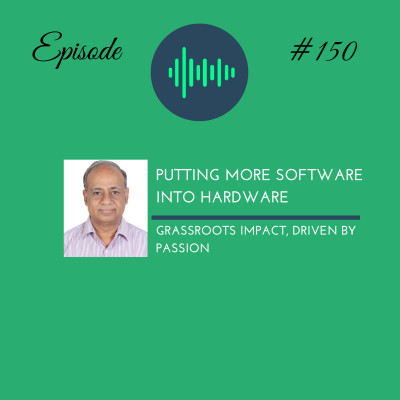In this conversation, S Srinivasa Raghavan better known as SS or Raghavan, shares his experience and perspectives on
- How we mutually influenced each other in choosing our careers in hardware and software
- Being strong in English grammar, that helped him though the came from a tamil medium education
- Getting to know the power of programmability in a calculator and being inducted into FORTRAN
- Developing an interest in software as a way to solve problems more than writing programs
- About campus selection, tests and interviews – and how he got into a hardware role for his first job
- Leading a team developing a disk controller and wanting to start something on his own with a friend
- Wanting to do hardware, but put more software into it
- Helping one of Infosys clients solve a very difficult problem with their mainframe, in the area of connectivity using a hardware solution for data transfer
- Based on the success of that assignment, getting an offer to form and lead a group working on hardware projects
- Having control over his time
- An expectation from the younger generation to get deeper understanding of the core and related technologies they work on
- Where he gets ideas for innovation
- His answer to the question: Can a software professional switch to hardware?
- Some stories of challenges in making rain gauges
- His views on the level of discipline comparing hardware and software engineers
- His views and tips on aspirants to the hardware discipline as a career and whether software engineers should dabble in hardware
S.S. Raghavan, Founder & Managing Director Spatika Information Technologies, is a successful entrepreneur with a career spanning 40+ years. Spatika, under his able guidance, has developed products like Telemetric Rain Gauges and Telemetric Weather Stations which are currently installed in over 5000 Gram panchayat across various States in India. The team at Spatika also developed a VoIP phone as early as 1997 for Satyam Computers.
As Vice President at Infosys, he made significant contributions by developing many indigenous telecommunication products that were first in India. During his stint at Infosys, he was the main architect in developing the Bilingual Electronic Keyboard. He was also responsible for automating Rural Telegraphy in 7 states through the development of store and forward message switching system.
Prior to Infosys, he worked with HCL where he was responsible for designing and developing the entire Disk Sub System for the indigenous 16-bit computer.
He holds a BE degree from the Indian Institute of Science Bangalore


